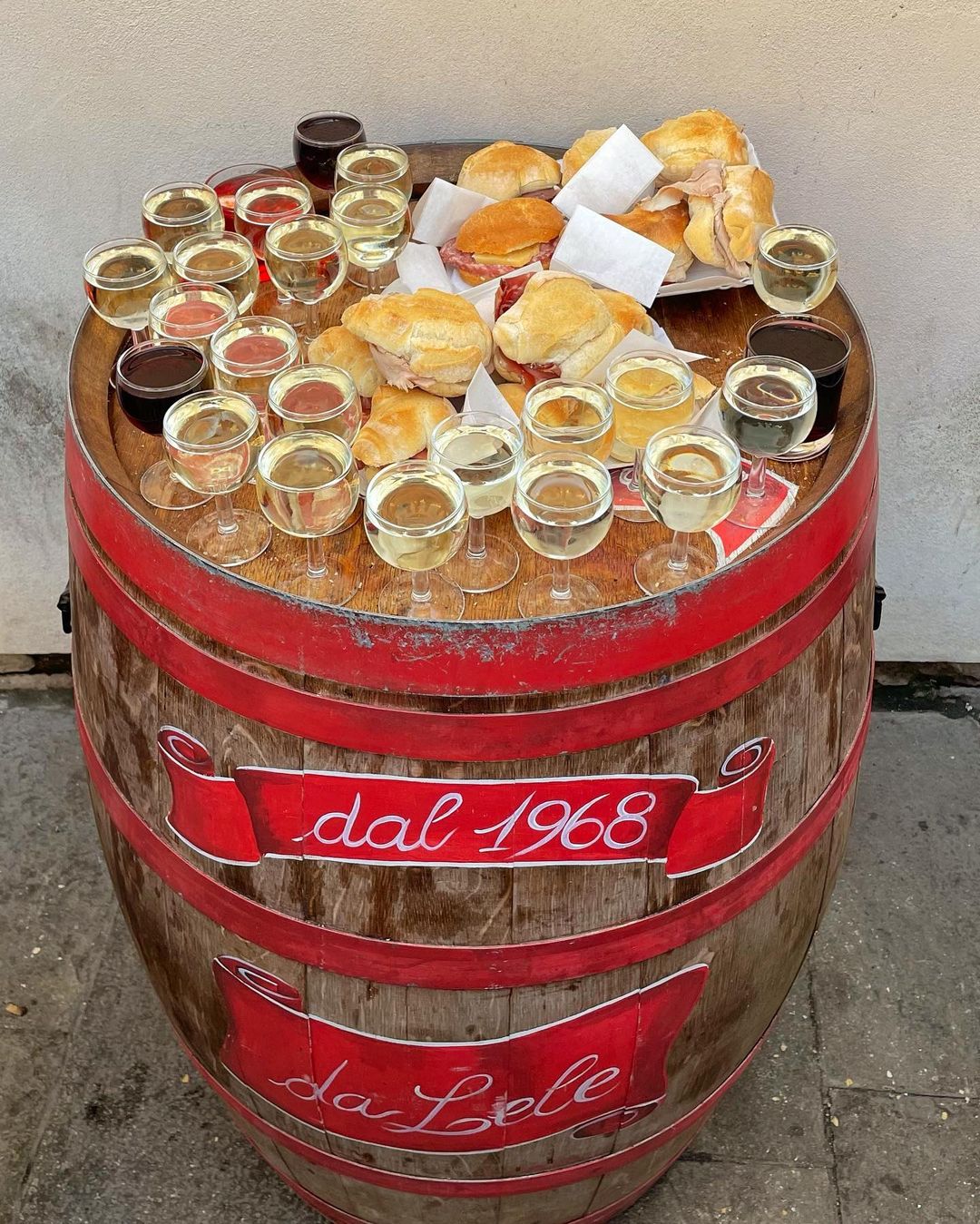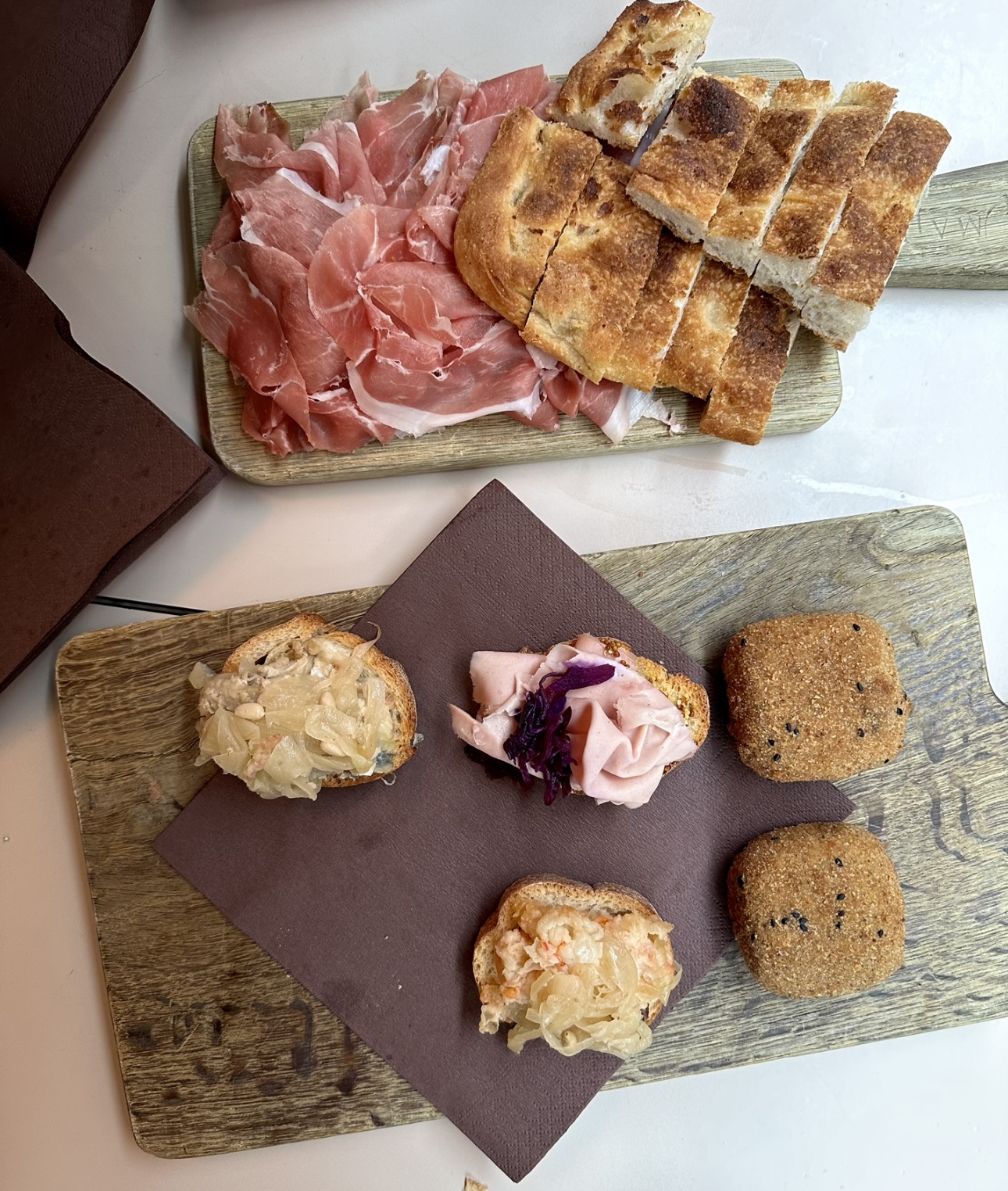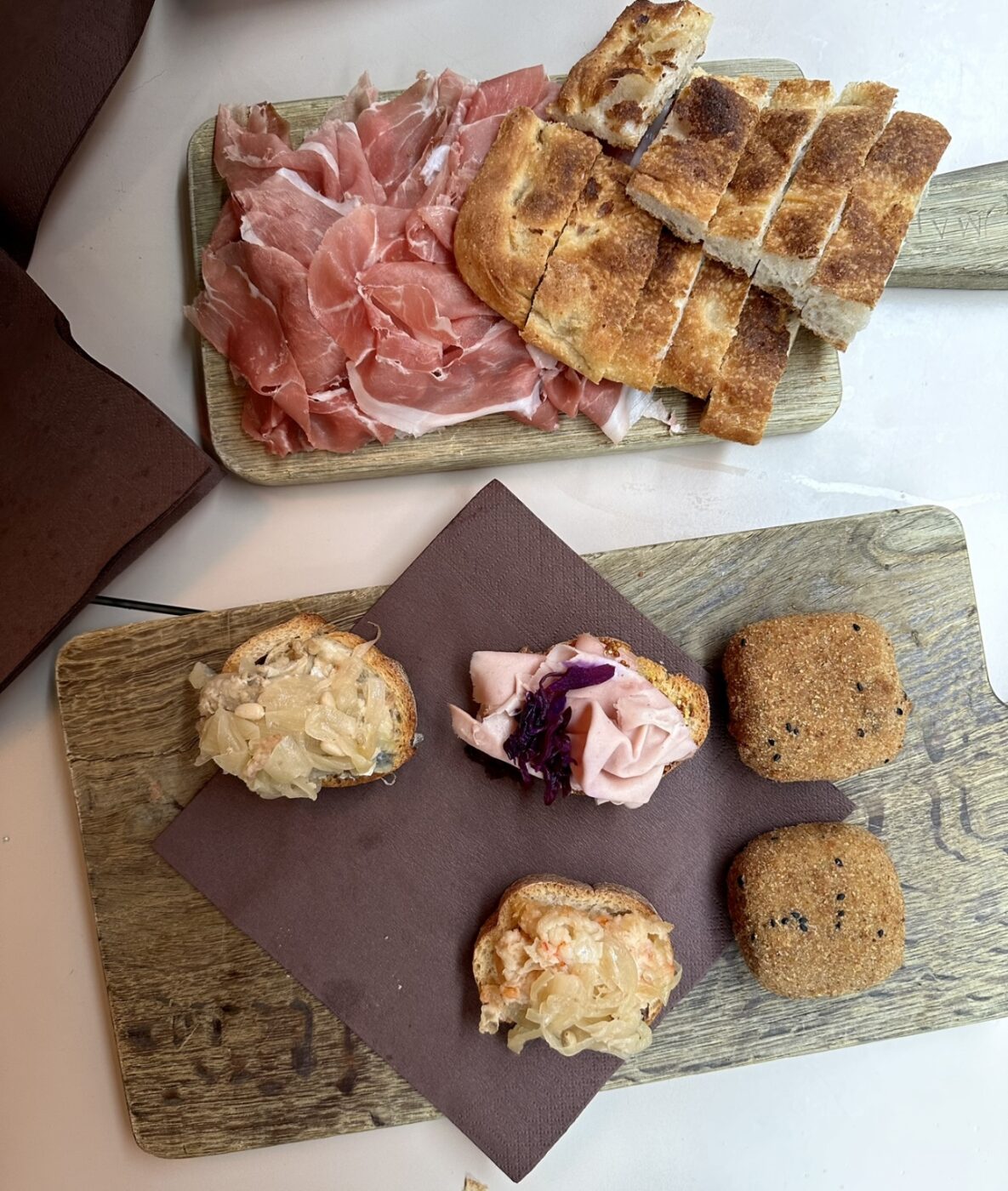When a full-on, sit-down meal just feels like a bit much, Venetians have the answer: cicchetti, the most affordable route to eating your way through Venice. More of a format than a food, cicchetti are bite-sized snacks, starting at around €1 a pop, designed to accompany an ombra or a spritz, and not necessarily only at aperitivo time. The beauty of cicchetti is that you can eat however many you want, whenever you want. Similar in concept to Spanish tapas or Basque pintxos, cicchetti are often crostini (but not always), that run the gamut on toppings; the most famous of these might be baccalà mantecato (whipped cod). But you’ll also find polpette, meatballs of meat or fish; mozzarella in carozza, a fried sandwich of mozzarella and anchovies; sarde in saor, vinegar-marinated sardines; schie and polenta, lagoon shrimp atop a little square of grilled polenta; and all sorts of fried things, from onions and olives to squid and croquettes.
Bacari are the traditional establishments in which you find such goodies; some call them wine bars, but we’d argue that bacari are more no-frills than the term implies. Tavernesque, rather, these spots are often standing room only (some really are holes in the wall), with the cicchetti displayed along the counter for you to pick and choose from. Some point to Bacchus, the Roman god of wine, for their name, but a more credible origin story connects it to the Venetian verb “far bàcara”, which translates to “to make merry” or “to celebrate”, and a tipsy 19th-century gondolier who, after enjoying a malvasia from Puglia that was popular at the time, reportedly exclaimed, “Bon! Bon! Xe proprio un vin da bacàro!”
Here, seven of the best places to try cicchetti in Venice, from real old-school bacari to places we would actually call wine bars (particularly of the natural persuasion).
If you’re looking, rather, for the best restaurants in all of Venice (satellite islands included!), check out our guide here.
Bacareto da Lele – An always bustling, affordable, and laid-back watering hole in a quieter area of Venice where local patrons–mainly students and professors of the adjacent architecture university–spill into the streets (there’s nowhere to sit) while sipping ombre of local, unlabelled wine and snacking on salami and bread.
Cantine del Vino già Schiavi – A compulsory stop in the Dorsoduro area, this tavern-esque, old-school haunt is known by locals as “il bottegon.” It’s a favorite amongst students thanks to fresh, creative cicchetti choices at very palatable prices–to be accompanied by wines by the glass or, of course, a spritz. You can’t go wrong with any of the cicchetti, made fresh twice a day.
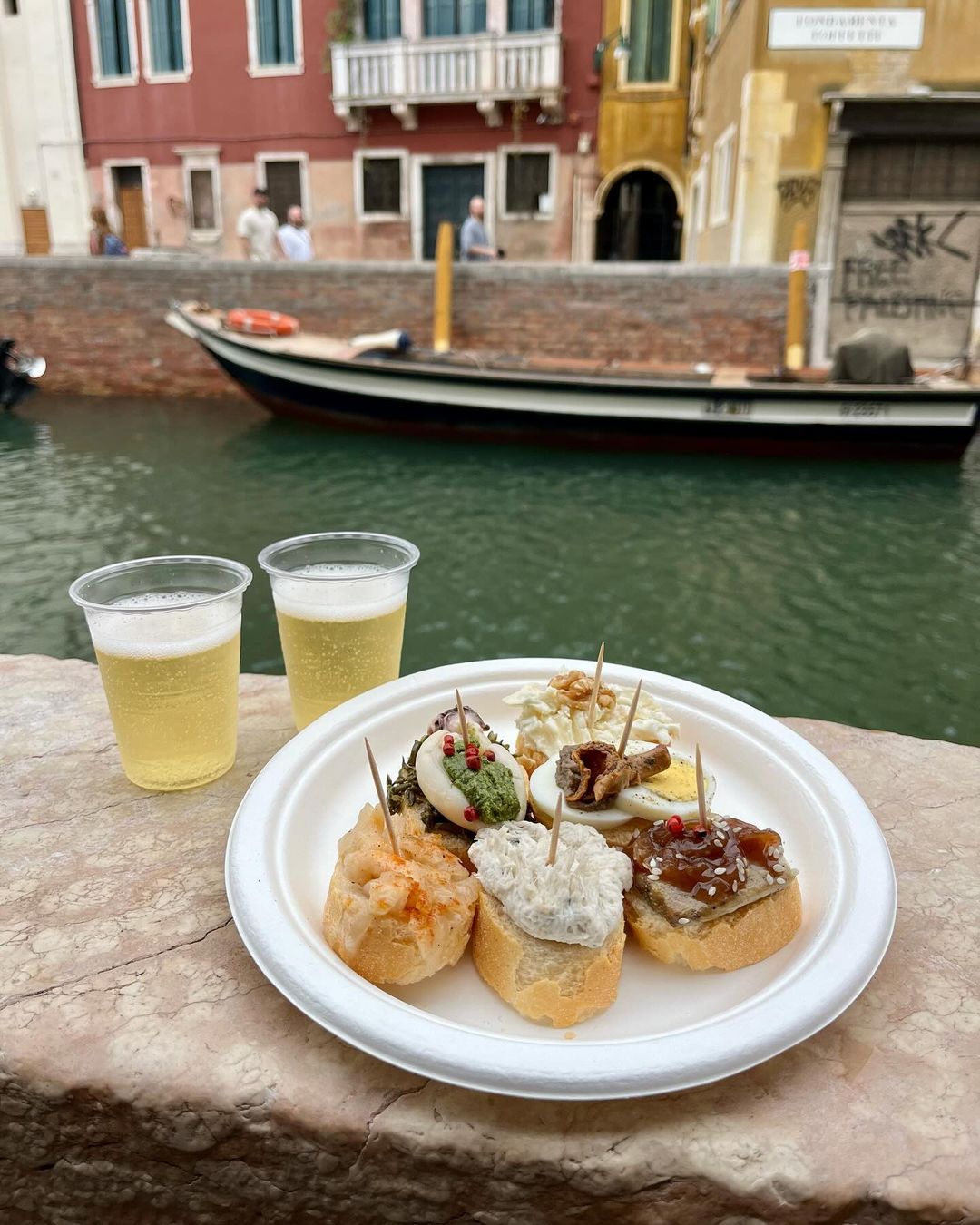
Courtesy of Cantine del Vino già Schiavi
Al Mercà – This tiny bacaro on a little square right by the Rialto market is as simple and genuine as can be. A small wooden case is lined with mini, one- to two-ingredient sandwiches of all varieties–tuna and celery, mortadella, speck and gorgonzola–for €2 a pop, and spritzes and glasses of wine are on offer. Standing room outside only.
Vino Vero – The coolest natural wine bar in town (and one of the first), Vino Vero has offerings by the glass or by the bottle–as well as a full case of fantastic crostini–along a canal in Cannaregio. You can expect a bit of a wait for one of their few tables, but we don’t mind sitting out in the street with our legs dangling above the water.
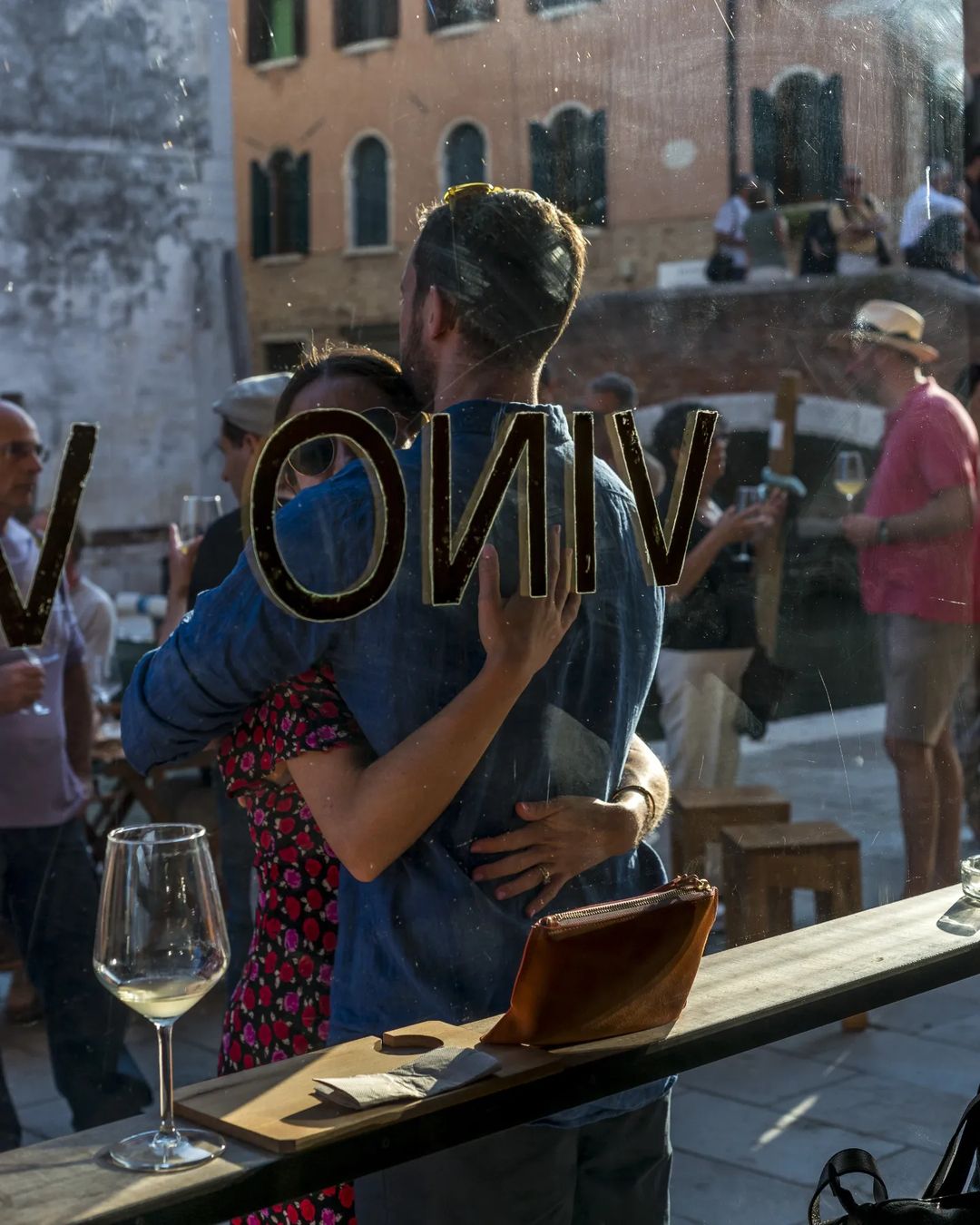
Courtesy of Vino Vero
Cibo Venezia – This modern-feeling deli has a table or two where you can grab tagliere laden with cicchetti and artisanal salumi, cheese, preserves, and other local goodies alongside a glass of wine. But we particularly love that you can buy anything to take home with you–including vac-packed cured meats and cheeses.
Adriatico Mar – Here, everything revolves around the crossroads of cultures that have come from the Adriatic Sea, from olives and yogurt from the Aegean islands to malvasia wines from Istria. The hyper-curated drinks menu includes wines from small productions (usually under 5,000 bottles) and a single, but excellent, craft beer on draft from Thiene, Veneto. It’s also great for lunch, when, in addition to cicchetti, sandwiches, and taglieri, they often feature traditional Venetian dishes like musetto (a pork sausage), castraure (baby artichokes from Sant’Erasmo), and castradina, a mutton stew served during the Madonna della Salute festival. You can enjoy your goodies in the well-designed space (owner Francesco Molinari is an architect, and you can tell) or out on the wooden boat dock; those of you with barchini can also tie up and have aperitivo in the comfort of your own boat.
Ozio – With a wide range of natural wines from small producers and tables outside with a view, wine bar Ozio, whose name translates to “idleness”, is one of those places where you really feel the rhythms of Venice’s daily life. The name says it all: while away an evening in the gorgeous campo Santa Maria Formosa with endlessly flowing glasses of wine and platters of refined cicchetti.
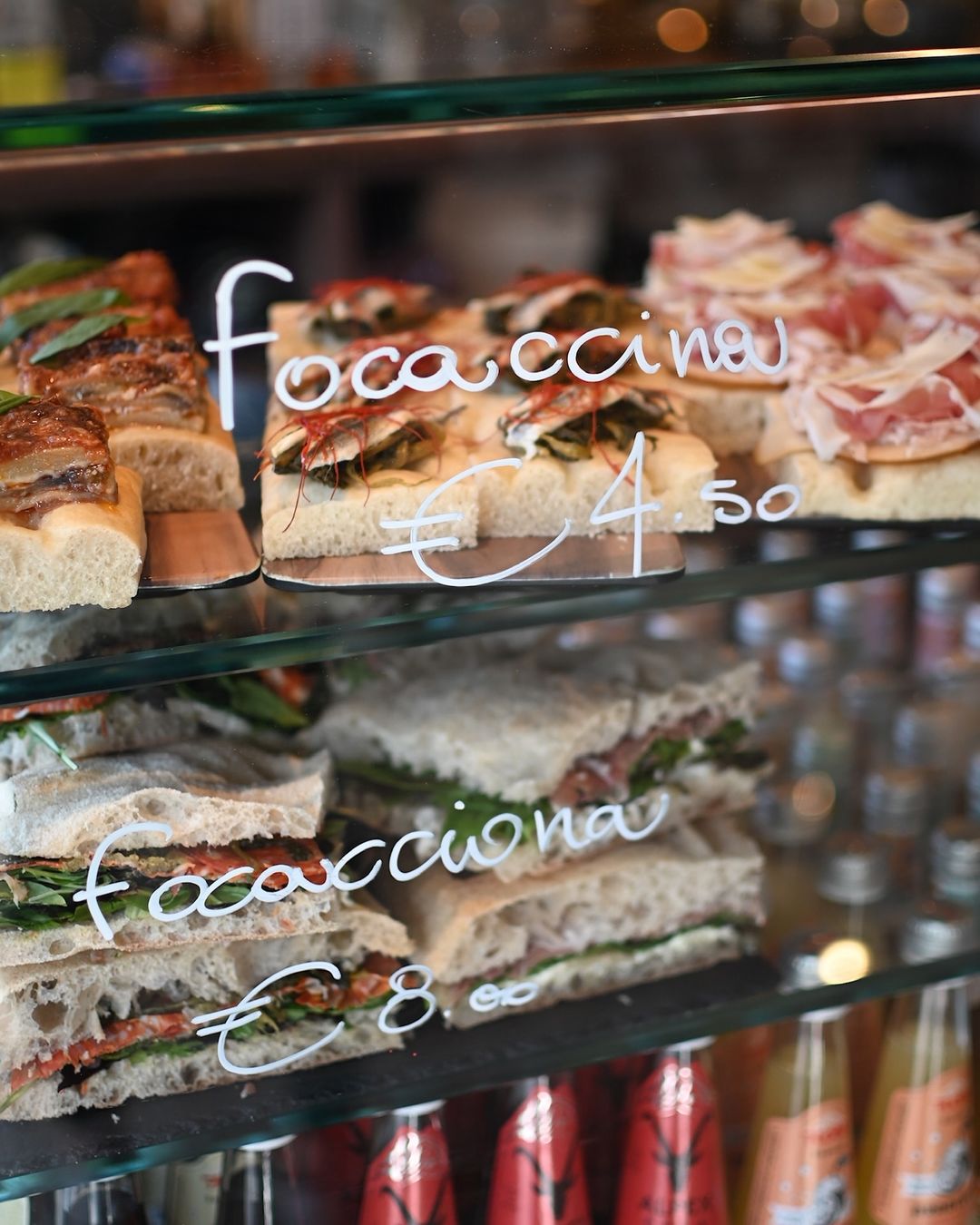
Courtesy of Ozio
